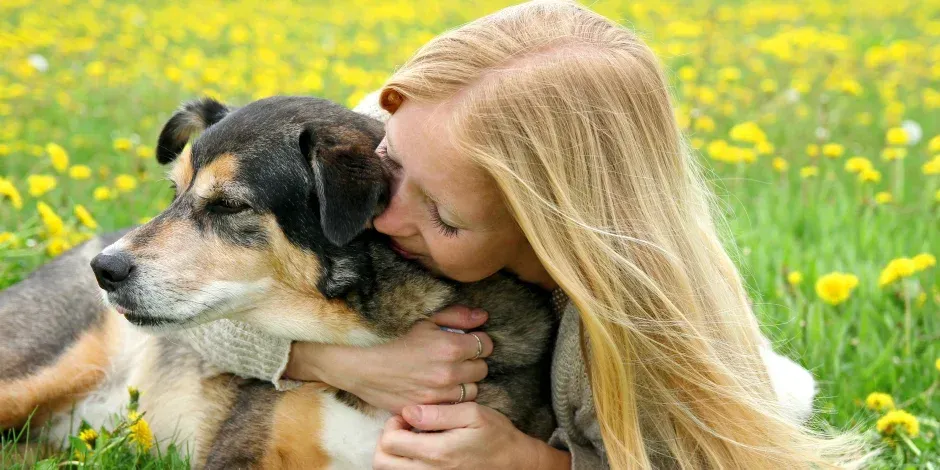Introduction
As dogs age, they require specific care to ensure their well-being during their twilight years. But when is a dog considered a senior? Every animal reaches old age at different times, with larger breeds typically aging faster than smaller ones. The initial signs indicating that a dog is entering its later stage of life include graying fur, deteriorating vision, or changes in dietary preferences. According to Manuel Lázaro, a member of the Madrid College of Veterinarians, “In general, the lifespan of a large breed dog is between 11 and 13 years, while smaller breeds can live up to around 13 to 16 years.”
Advancements in healthcare and nutrition have led to dogs living longer lives. Their senior years begin around the midpoint of their lifespan, influenced by factors such as size, breed, gender, and physical condition, including issues like obesity, as noted by Silvia Miguélez, a veterinarian specializing in companion animals.
Understanding the Aging Process
The term “fragility syndrome” refers to older dogs who are on the brink of developing age-related ailments. This syndrome manifests as increased susceptibility to illnesses due to factors such as muscle loss, decreased immune function, and organ deterioration, particularly in the heart, kidneys, and liver. Manuel Lázaro emphasizes that advanced age also affects a dog’s coat, leading to loss of luster and skin elasticity, along with the appearance of gray hairs around the eyes and nose.
Moreover, there are other changes associated with a dog’s senior years, including alterations in movement, sensory decline (vision, hearing, and smell), shifts in dietary preferences, and the potential onset of cognitive dysfunction syndrome, akin to Alzheimer’s disease in humans.
While aging is not a disease, it does increase the likelihood of certain health issues, such as heart disease, kidney or liver problems, tumors, endocrine disorders, and musculoskeletal disorders like arthritis. Neuronal deterioration with age can lead to disorientation, sleep disturbances, memory loss, and changes in toileting habits, as well as the development of new fears.
Common Causes of Death in Senior Dogs
Several common causes contribute to the demise of older dogs, including chronic kidney failure, heart failure, and cancer. In many cases, weight loss serves as the initial indicator of underlying health issues, as explained by Miguélez.
Caring for an Aging Dog at Home
To ensure a good quality of life for aging dogs, owners must be vigilant for symptoms such as fatigue, coughing, excessive drinking or urination, constipation, or mobility difficulties, advises Lázaro. Additionally, adopting various preventive care measures can help mitigate health complications in older dogs:
- Dietary Considerations: Opt for a diet low in protein, phosphorus, and sodium, with reduced caloric content to support liver, kidney, and heart function. Senior-specific commercial diets are beneficial due to their tailored nutritional profiles.
- Nutritional Supplements: Incorporate supplements like antioxidants, fatty acids, and vitamins to support overall health.
- Hydration: Ensure access to clean water at all times to promote adequate hydration.
- Weight Management: Encourage weight loss to improve mobility and overall health.
- Moderate Exercise: Engage the dog in moderate exercise to maintain muscle tone and joint flexibility.
- Vaccination Schedule: Adhere to vaccination schedules to bolster the aging immune system.
- Regular Veterinary Check-ups: Schedule routine vet visits to detect health issues early.
- Monitoring and Communication: Stay vigilant for any changes in behavior or health and communicate promptly with the veterinarian.
Understanding Decreased Appetite in Senior Dogs
Senior dogs often exhibit reduced food intake due to various age-related factors. According to Miguélez, sensory changes, including decreased taste and smell perception, can alter the appeal of food, leading to decreased consumption. Furthermore, aging dogs may become more sensitive to stress-inducing situations that disrupt their routines, while neuroendocrine changes can affect natural appetite regulation mechanisms.
Conclusion
In conclusion, caring for an aging dog involves understanding and addressing the physiological changes that occur with age. By providing appropriate nutrition, medical care, and a supportive environment, owners can ensure that their furry companions enjoy a comfortable and fulfilling life in their golden years. Through proactive management and attentive observation, the bond between humans and their aging canine companions can remain strong and mutually enriching.
